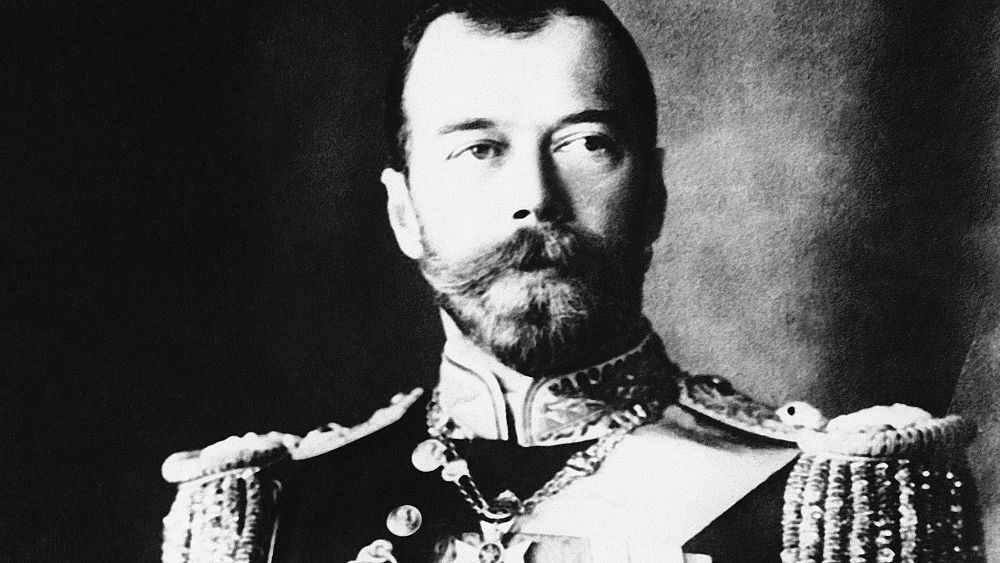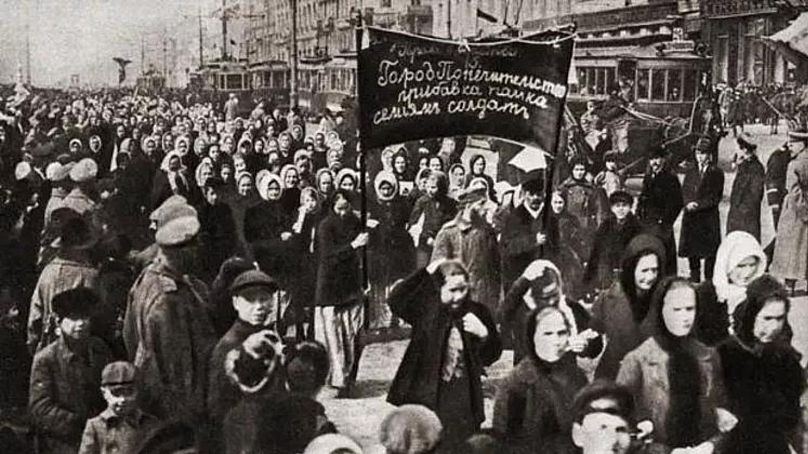
15 March 1917 — Tsar Nicholas II steps aside, paving the way for Russian women to get the vote.
As Women’s History Month continues, we look at how Tsar Nicholas II of Russia’s abdication on this day 106 years ago was, in part, thanks to women speaking out for equality and their rights.
Russia’s ‘February Revolution’ which spelled the end of the monarchy actually took place in March. This is because, at the time, the nation still followed the Julian calendar, which was 13 days behind the Gregorian method used in western Europe. To avoid confusion, we’ll use the Gregorian dates in this article.
At the start of the revolution — and on the first International Women’s Day held on its now set-in-stone date of 8 March — women marched to protest at the poor conditions as a result of the First World War effort. Imperial Russia was at war with Germany and Austria-Hungary, fighting as allies of the British, French and Italians.
Russia had been hugely unprepared for the outbreak and scale of the war and, as a result, were struggling not only militarily but economically, as the country adjusted to the demands of modern warfare. Women bore much of the brunt of the suffering — worrying about their male family memories in battle and economic struggles in their own daily lives.
When female textile workers from the industrial Vyborg district in Petrograd (now Saint Petersburg) went on strike after getting fed up of working hard all day to earn money to pay for bread that was rarely available despite long queues, they found a multitude of support.
Thousands marched towards the centre of Petrograd, calling for “bread” and “dignity”. Police attempted to stop them crossing bridges to the city centre — which sits on an island in the Neva River — but many simply crossed the frozen winter water on foot to reach the other side.
The women’s impressive protest quickly spread across the city and wider country and the government and civil authorities were brought to their knees. Confidence and trust in the Tsar and the royal family was at an all-time low, thanks to decades of brutality, a lack of investment and development in Russia as well as countless difficulties caused by the war.

The reaction — or lack thereof — from the top did nothing to quell the protests, instead piquing public anger and increasing the level of protests and protestors. Demands diversified to ending Russia’s role in the war, with teachers, students, army deserters, and white-collar workers joining in the dissent. The already-divided Russian government increased their infighting and turned on Tsar Nicholas II.
On 15 March, he abdicated the throne and his decision brought to an end over 300 years of rule by the Romanov family, paving the way for a republic with a socialist form of government which is reflected in modern-day Russia.
While the Russian revolution didn’t end with Tsar Nicholas’ abdication, it certainly sparked the start of years of unrest, with the uprising actually continuing until 1923.
While the abdication put an end to years of royal rule in Russia — which also led to his and his family’s execution — renders this day in history important for the Tsar’s actions themselves, women are at the heart of this story. In fact, his choice actually got women in Russia the right to vote in a roundabout way.
Nicholas was furious with the women’s protest, even authorising General Khabalov of the Petrograd Military District to shoot any woman who refused to stand down. While some were killed, the interim government in place after the abdication granted women the right to vote as a result of their protest action. In May 1917, a law was passed giving women over the age of 20 the ability to elect the Constituent Assembly. Russia was actually one of the very first nations to allow women to vote in the world, with only New Zealand — in 1893 — Finland (1906), Denmark and Iceland (both in 1915) beating them to it.
While 15 March is, therefore, a happy day for equality and democracy in Russian history, it marked the beginning of the end for the Tsar and his family. On 17 July 1918, Nicholas was killed by a firing squad made up of seven Communist soldiers from Central Europe and three local Bolsheviks under the command of chief executioner Yakov Yurovsky. His wife Alexandra and their five children Olga, Tatiana, Maira, Anastasia and Alexie were also shot to death, alongside members of their entourage. Court physician Eugene Botkin, lady-in-waiting Anna Demidova, head cook Ivan Kharitonov and footman Alexei Trupp who had chosen to stay with the family met the same fate.
Despite this unhappy ending, Nicholas, his family and executed staff have all since been canonised as ‘passion bearers’ by the Russian Orthodox Church Outside of Russia. In 2000, Tsar Nicholas II and his immediate family were recognised, too, as martyred saints by the synod of the Russian Orthodox Church.

